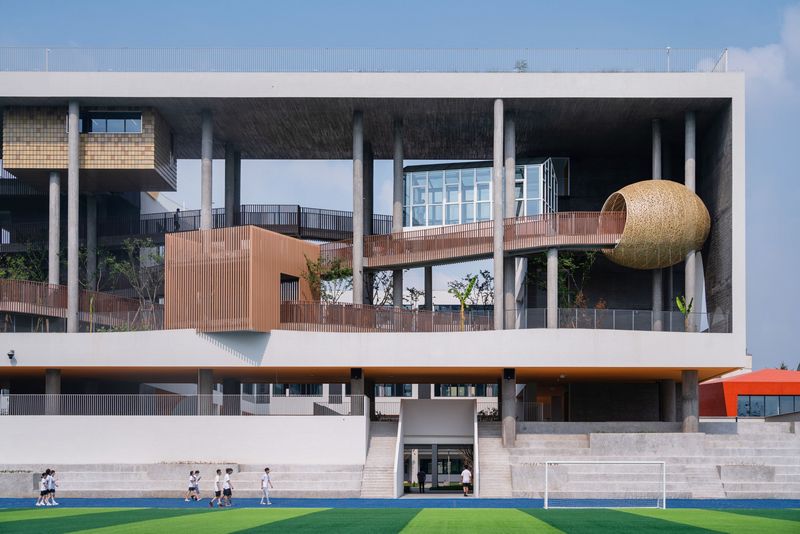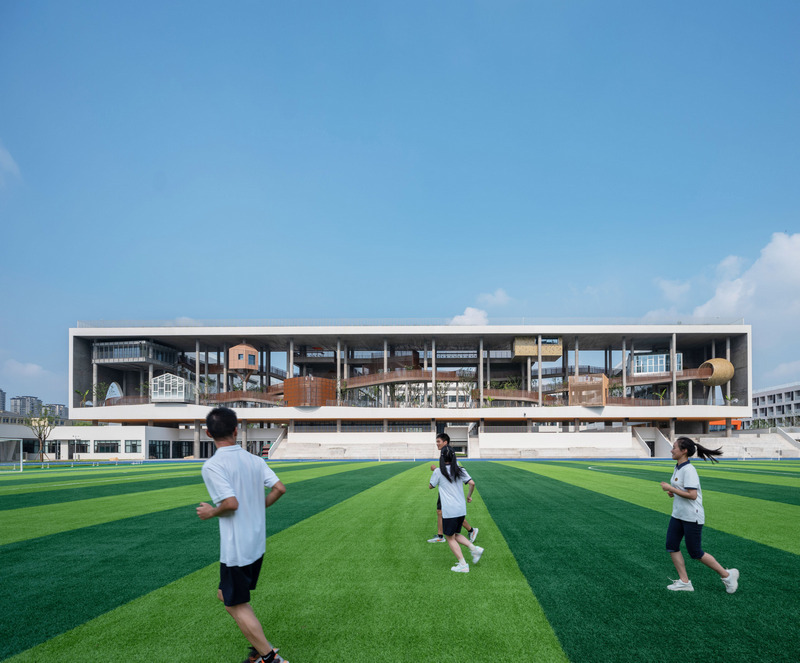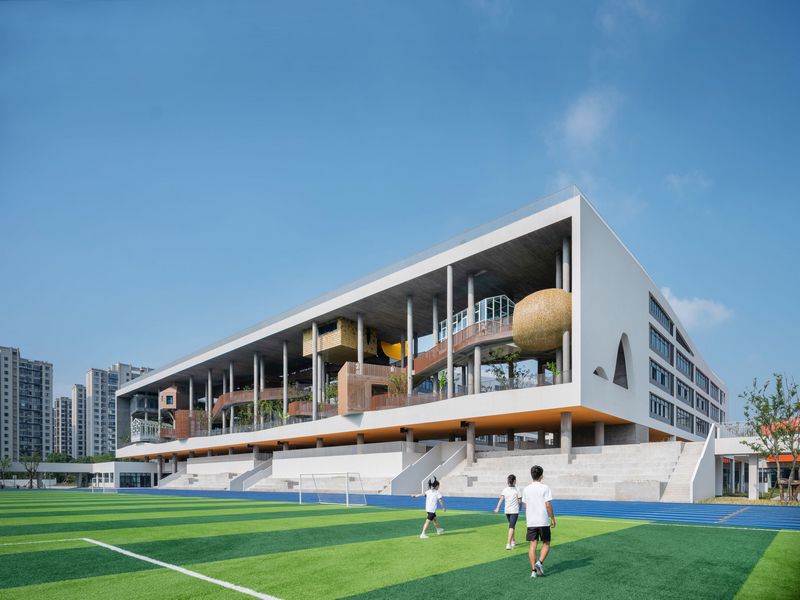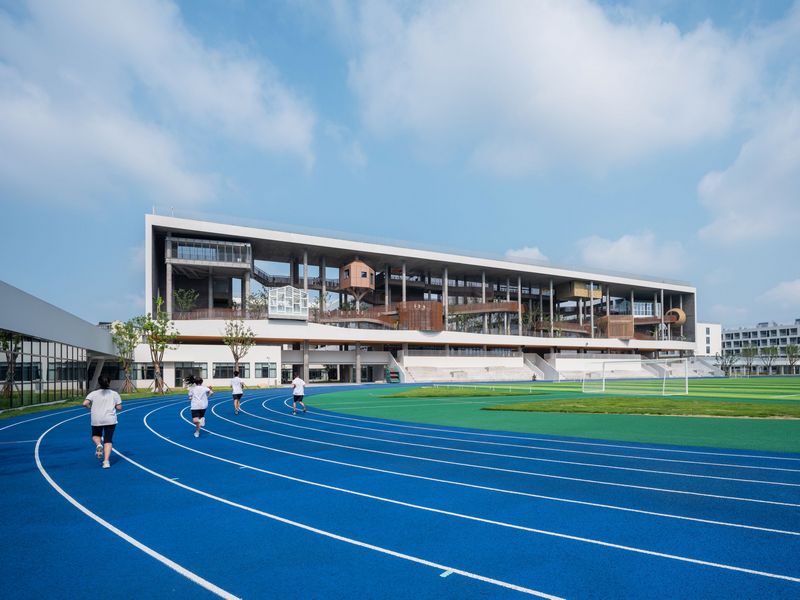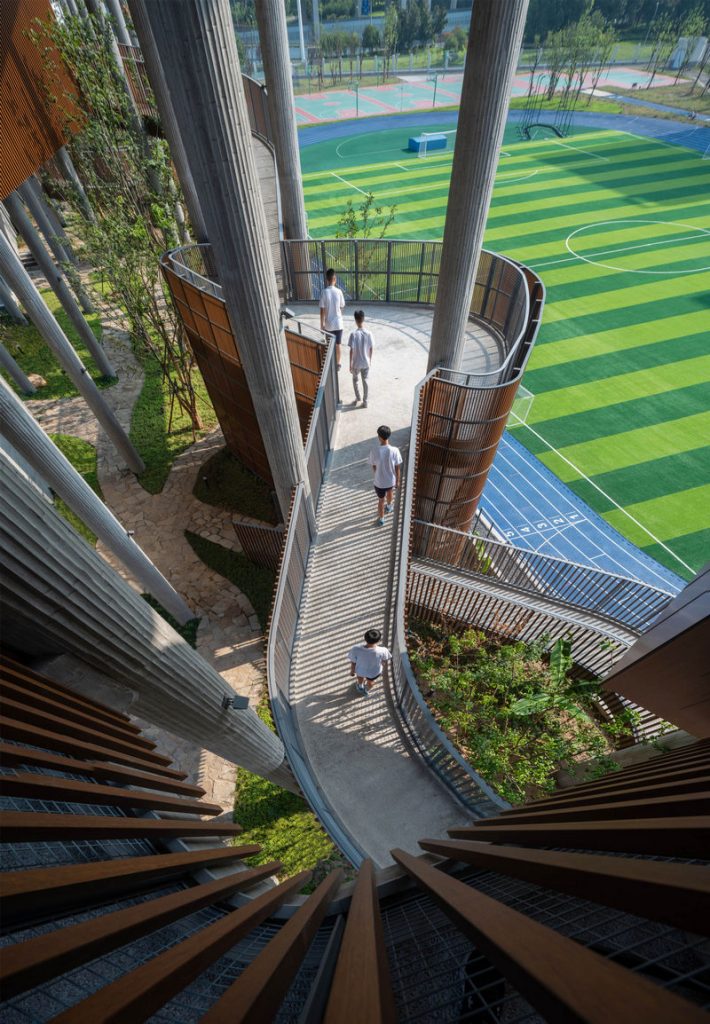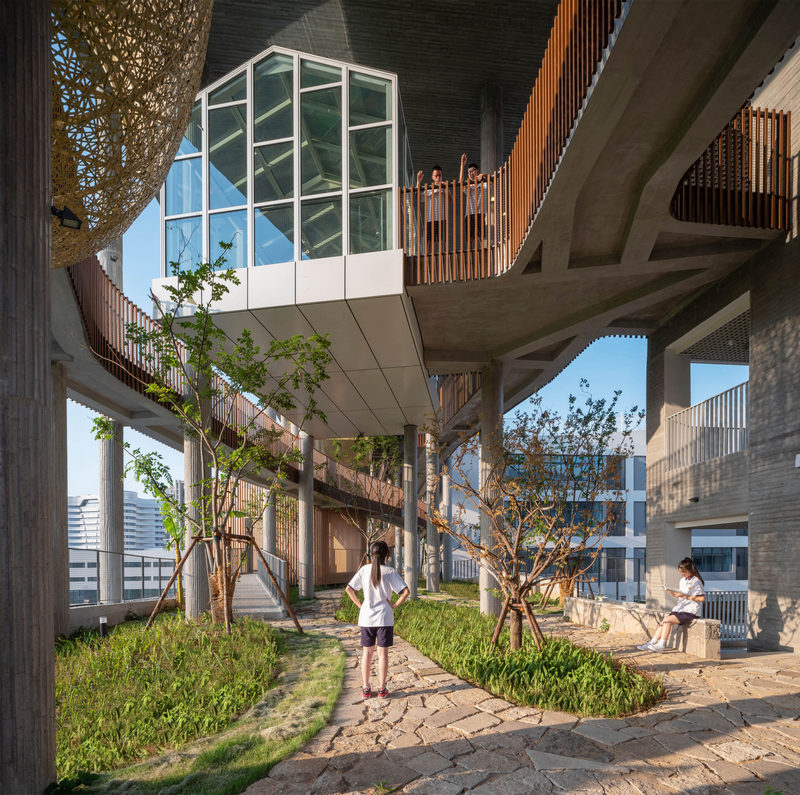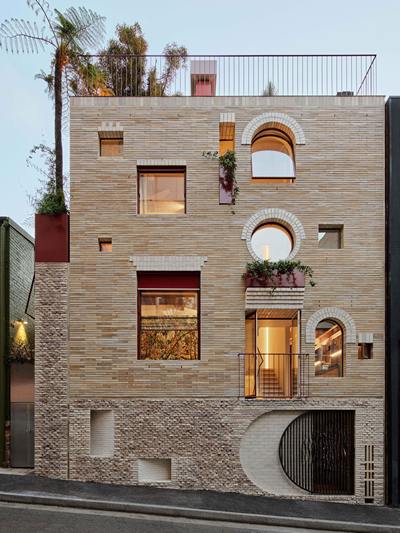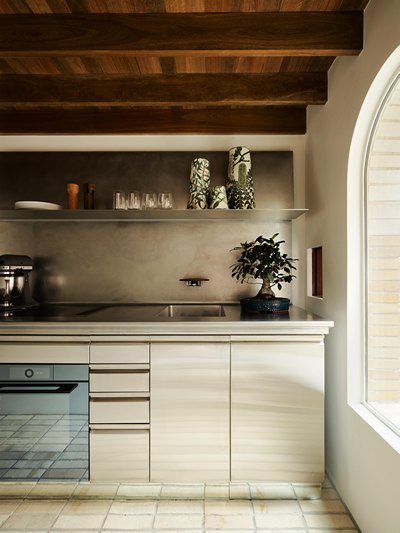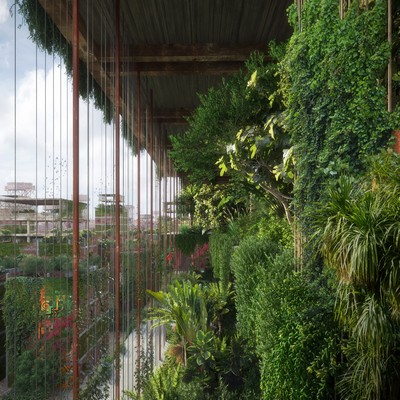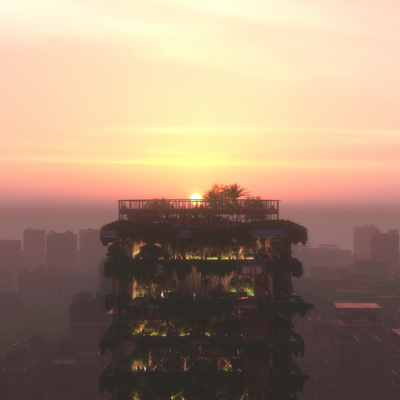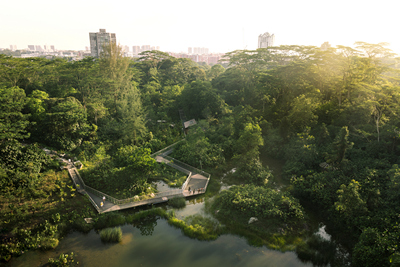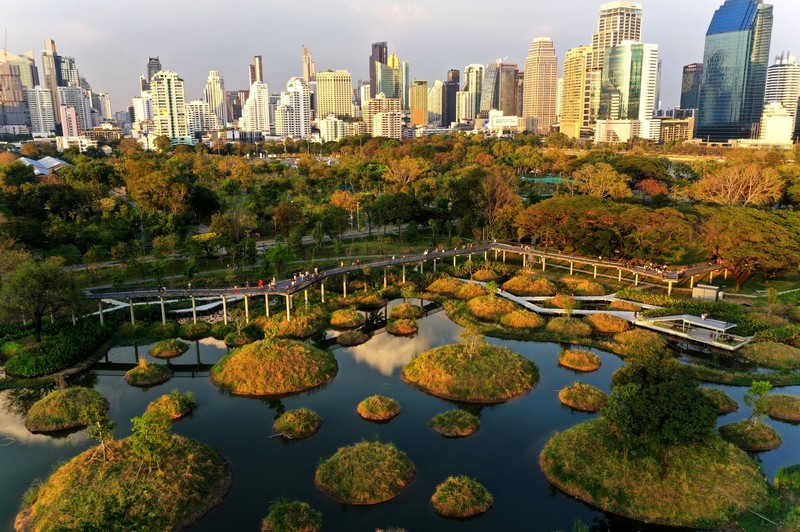Huizhen High School by Approach Design Studio/Zhejiang University of Technology Engineering Design Group in China has been declared the World Building of the Year at the 2023 World Architecture Festival (WAF).
The ultimate accolades of World Building of the Year, World Interior of the Year, Future Project of the Year and Landscape of the Year were announced today as hundreds of delegates from across the world convened at a grand finale Gala Dinner at Marina Bay Sands in Singapore. A host of Special Prizes, including the International Building Beauty Prize, Best Use of Colour Prize and Small Project of the Year were also announced at the closing event, to celebrate the sixteenth edition of the festival. The announcement follows the final day of WAF, in which prize winners across all 44 categories competed for the winning titles.
WINNERS
World Building of the Year
World Building of the Year supported by GROHE was awarded to Huizhen High School by Approach Design Studio/Zhejiang University of Technology Engineering Design Group in China. The project was initially shortlisted in the Completed Building School category.
Located in Jiangbei District, Ningbo City, Huizhen is a bold exploration of ‘efficiency-first’ campus design where time can be ‘wasted’ seriously. The boarding school campus is a ‘floating forest’ with classrooms hung in each corner of the forest and joined by meandering paths. Scattered tree houses provide students with temporary escapes from the burden of school. A ramp leads up to a gentle sloping roof, which doubles as an open-air lecture hall and a rooftop park with sporting facilities, usable by the public at the weekend – creating a new typology of architectural promenade.
Di Ma, Director at Approach Design Studio/Zhejiang University of Technology Engineering Design Group commented: “We always try to explore the boundaries of architecture while making something that’s fun. Our focus was not just about designing a school, or working with new forms, spaces, materials and facades, but about designing new school life and bringing the power of nature into the building. The building gives students a space to relax and relieve their stresses between their lessons.”
Paul Finch, Programme Director of the World Architecture Festival commented: “We loved this building as it is unexpected, and delightful. The architects have managed to create a school which is very different to the usual model where students are boxed in and put under teaching and architectural pressure. By contrast, this design encourages, walking, fresh air and the possibility of reflection away from academic intensity. As the architects note, you are at your most relaxed when you are wasting time, but not wasting; instead enjoying walking to classrooms through a ‘floating forest’ with plug-in buildings and amenities, all with views of nature. Simple materials are deployed for a combination of the innovative and the everyday. There are elements in this project that could be used for schools anywhere.”
The winner was selected by a super jury of luminaries of the global architecture industry – comprising Sir Peter Cook, Cook Belacevic Haffner; Guallart, Guallart Architects; Richard Hassell, WOHA and Albert Williamson-Taylor, AKT II.
World Interior of the Year
World Interior of the Year supported by Miele was awarded to 19 Waterloo Street by SJB in Australia. Originally shortlisted in the Residential (Single Dwelling) Category, the winning interior utilises expanded connections creatively within a limited footprint to create an open and quiet oasis in the city.
Wedged onto a narrow strip adjacent to the road, judges described this small multi-storey house as “like a wardrobe for the architect himself to live in”.
From the street the facade is punched with a random set of openings, but once inside, these reveal a highly tuned stack of rooms. Judges felt that “these generated a satisfying alignment and play of light”. There are unique furniture pieces and a work of art that was commissioned as a catalyst for the project. Craft and detail are everywhere, partly as a result of using materials salvaged from other projects. Judges described this winning interior project as “not only a building or an interior, but a pocket-sized tour de force”.
The winner was selected by a super jury of global design experts – comprising Nigel Coates, Nigel Coates Studio; Mark Dytham, Klein Dytham Architects; Ingrid van der Heijden, Civic architects; Friedrich Ludewig, ACME and Anna Xu, Dyson.
Future Project of the Year
Future Project of the Year supported by ABB went to The Probiotic Tower by Design and More International in Egypt. The project was initially selected from the Experimental category.
The Probiotic Tower’s central proposition is to repurpose obsolete water towers to positively address climate change as an adaptive system for cities, particularly in the developing world. At the core of the Probiotic Tower is a large algae bioreactor tank that absorbs CO2 from local sources. The building is expanded by establishing a bamboo plantation on-site and creating a amboo Cross Laminated Timber Production facility that grows modular components to build a supportive scaffold around the tower. Other features to promote the absorption of CO2 include facade algae panels, reed beds for treating wastewater and photovoltaic panels.
The winner was selected by a super jury of global architecture practitioners and academics – comprising Diogo Burnay, Dalhousie University; Issa Diabate, Koffi & Diabaté; Richard Maimon, KieranTimberlake and Tracy Meller, RSHP.
Landscape of the Year
Landscape of the Year went to Benjakitti Forest Park: Transforming a Brownfield into an Urban Ecological Sanctuary by TURENSCAPE, Arsomsilp Community and Environmental Architect in Thailand
The winning Landscape project transforms a former tobacco factory into a resilient living ecosystem, which is now the largest public recreational space in downtown Bangkok. The project reduces the destructive force of stormwater, filters contaminated water, and provides much-needed wildlife habitat in a region experiencing monsoon climates with an average yearly precipitation of about 1500mm.
The winner was selected by a super jury of global landscape specialists and academics – Lily Jencks, LilyJencksStudio; Henry Steed, ICN Design International; Professor Rafiq Azam, SHATOTTO architecture for green living and Zhengxu Zhou, Tsinghua University.
Rifle Range Nature Park by Henning Larsen in Singapore, Boca de la Mina Promenade in Reus by Batlleiroig Arquitectura in Spain and Mayfield Park by Studio Egret West in the United Kingdom were also highly commended in the Landscape category.
Special Prizes
The Visualisation Prize, supported by Lumion: The Anthony Timberlands Center for Design and Materials Innovation by Fay Jones School of Architecture and Design in United States
- Hillcrest Rose Bay, Sydney by Woods Bagot in Australia was highly commended
The Futureglass Prize, supported by Aestech: 55 Pitt Street by Woods Bagot and SHoP Architects in Australia
- Fisher and Paykel Global Headquarters by RTA Studio in New Zealand was also highly commended in the Futureglass Prize
Best use of Natural Light, supported by VELUX: See Sea Park by Osamu Morishita Architect and Associates in Japan.
International Building Beauty Prize, supported by Royal Fine Art Commission Trust and Ballymore: Angsila Oyster Scaffolding Pavilion by Chat Architects in Thailand
- CAPITASPRING by BIG – Bjarke Ingels Group in Singapore was also highly commended in the International Building Beauty Prize
The GROHE Water Prize: Micro Colony by UArchitects / Misak Terzibasiyan in Bangladesh
Best Use of Colour: Turrell Pavilion by Studio MK27 in the Maldives
Small Project of the Year: Karuizawa Commongrounds Bookstore by Klein Dytham architecture in Japan
WAFX
THE WAFX Prize overall winner has also been announced during the live festival. WAFX recognizes projects that best use design and architecture to tackle major world issues, including health, climate change, technology, ethics and values.
The winning project was Rethinking Oil Rigs – Offshore Data Centres by Arup in United Kingdom. The project rethinks oil rig structures as data centres giving them a new function in the fast-expanding circular economy.
STUDENT CHARRETTE supported by BROADWAY MALYAN
Seven university student teams were shortlisted to take part in a charrette related to the programme theme ‘Catalyst’ during the live festival. The theme was intended to stimulate thinking about ways in which design could accelerate beneficial change in respect of challenges facing society.
The student charette was won by BALAY ARAPAAP: An Inclusive Informal Learning Center for the Remote Island of Puro Caoayan by Team C from University of North Philippines.
DRAWING PRIZE
The Architecture Drawing Prize, sponsored by Iris Ceramica Group and co-curated by Make Architects, Sir John Soane’s Museum and World Architecture Festival (WAF), celebrates and showcases the art and skill of architectural drawing in three categories, the category winners announced last month were:
- Hand-drawn Category winner: Grundtvig by Ben Johnson
- Digital Category winner: The Archatographic Map of the Incomplete Landscape on Pedra Branca by Eugene Tan
- Hybrid Category winner: (Re)membering the See Monster by Eldry John Infante
Next year, the World Architecture Festival and INSIDE World Festival of Interiors will take place once again at Marina Bay Sands, Singapore, on 6 – 8 November 2024.
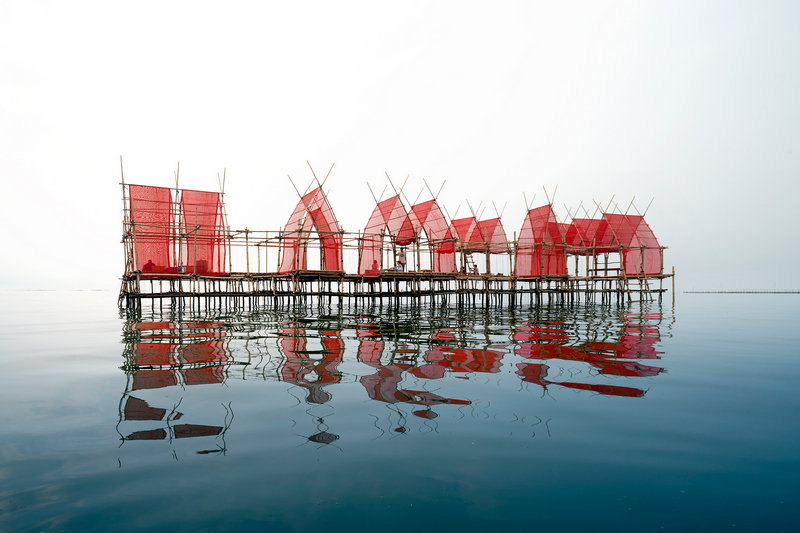
Angsila Oyster Scaffolding Pavilion by Chat Architects © W Workspace 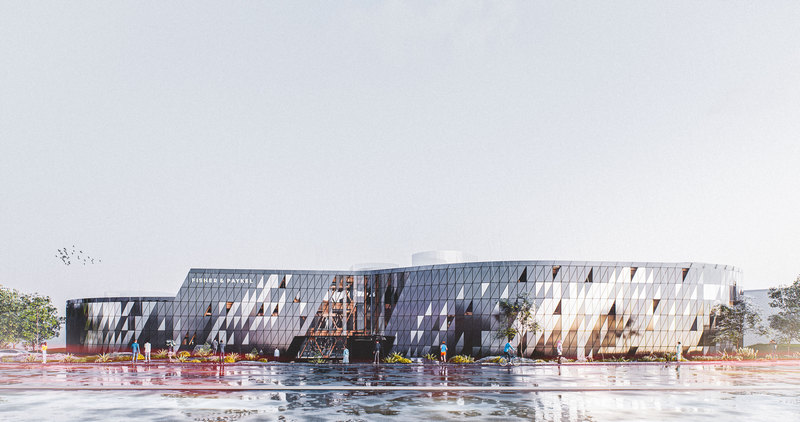
Fisher and Paykel Global Headquarters by RTA Studio 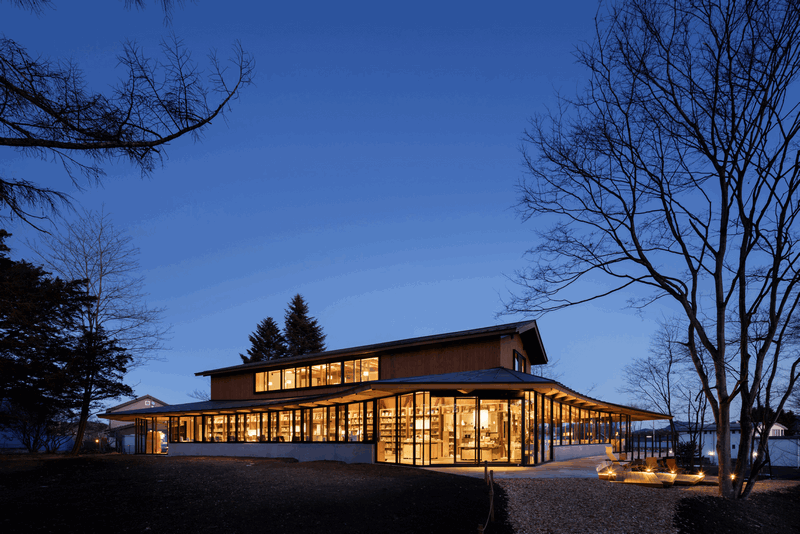
Karuizawa Commongrounds Bookstore by Klein Dytham Architecture © Nacasa & Partners 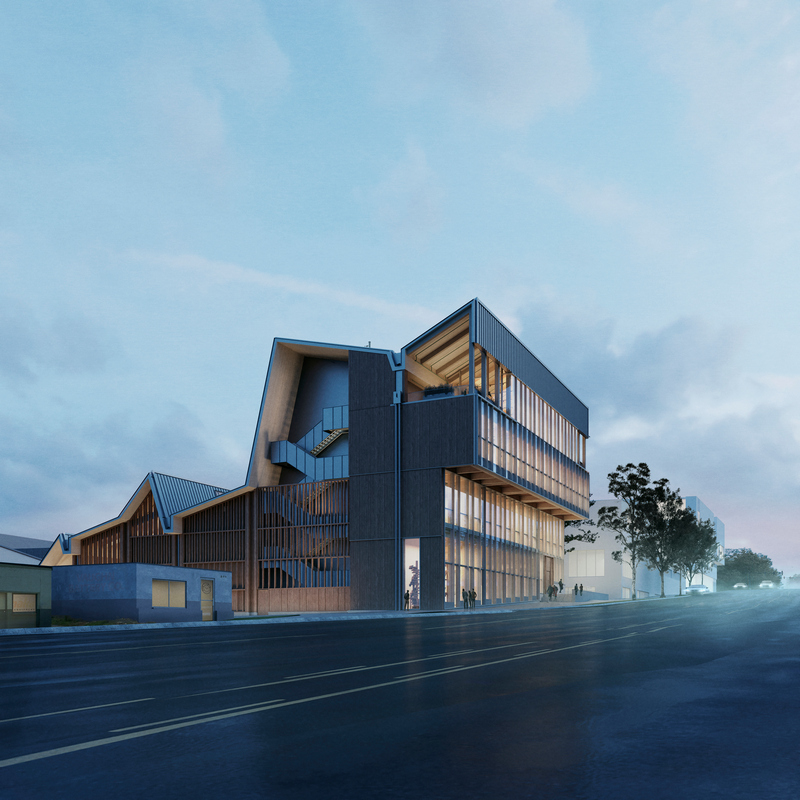
The Anthony Timberlands Center for Design and Materials Innovation by Fay Jones School of Architecture and Design © Picture Plane
For more details on the 2024 World Architecture Festival and the Inside Festival of Interiors please visit www.worldarchitecturefestival.com and www.insidefestival.com @worldarchfest #INSIDE23 #WAF23












